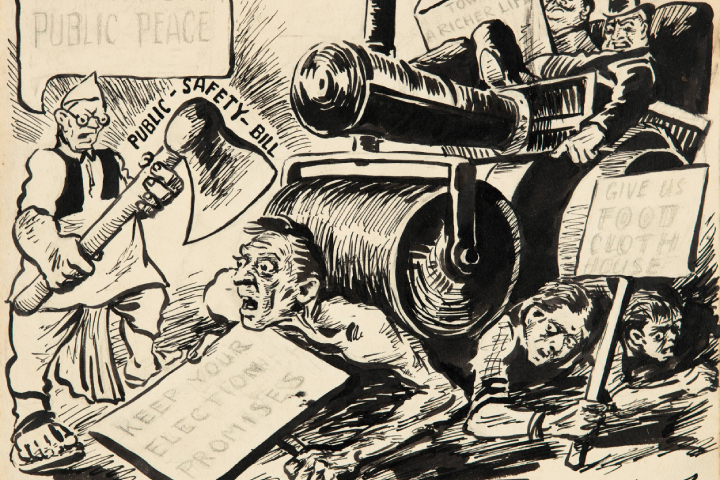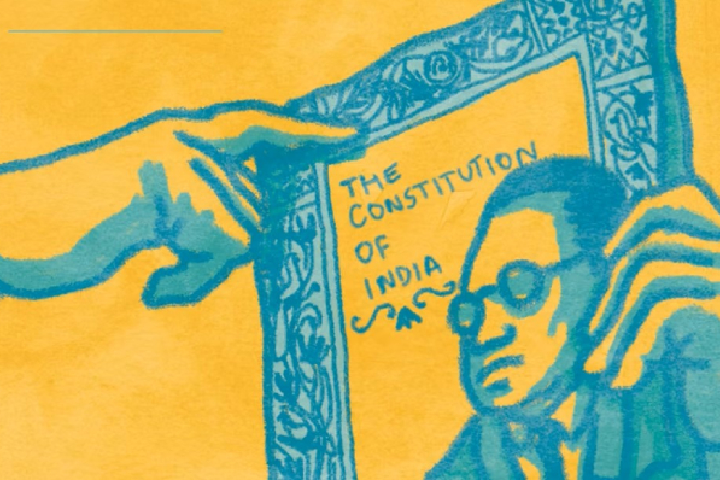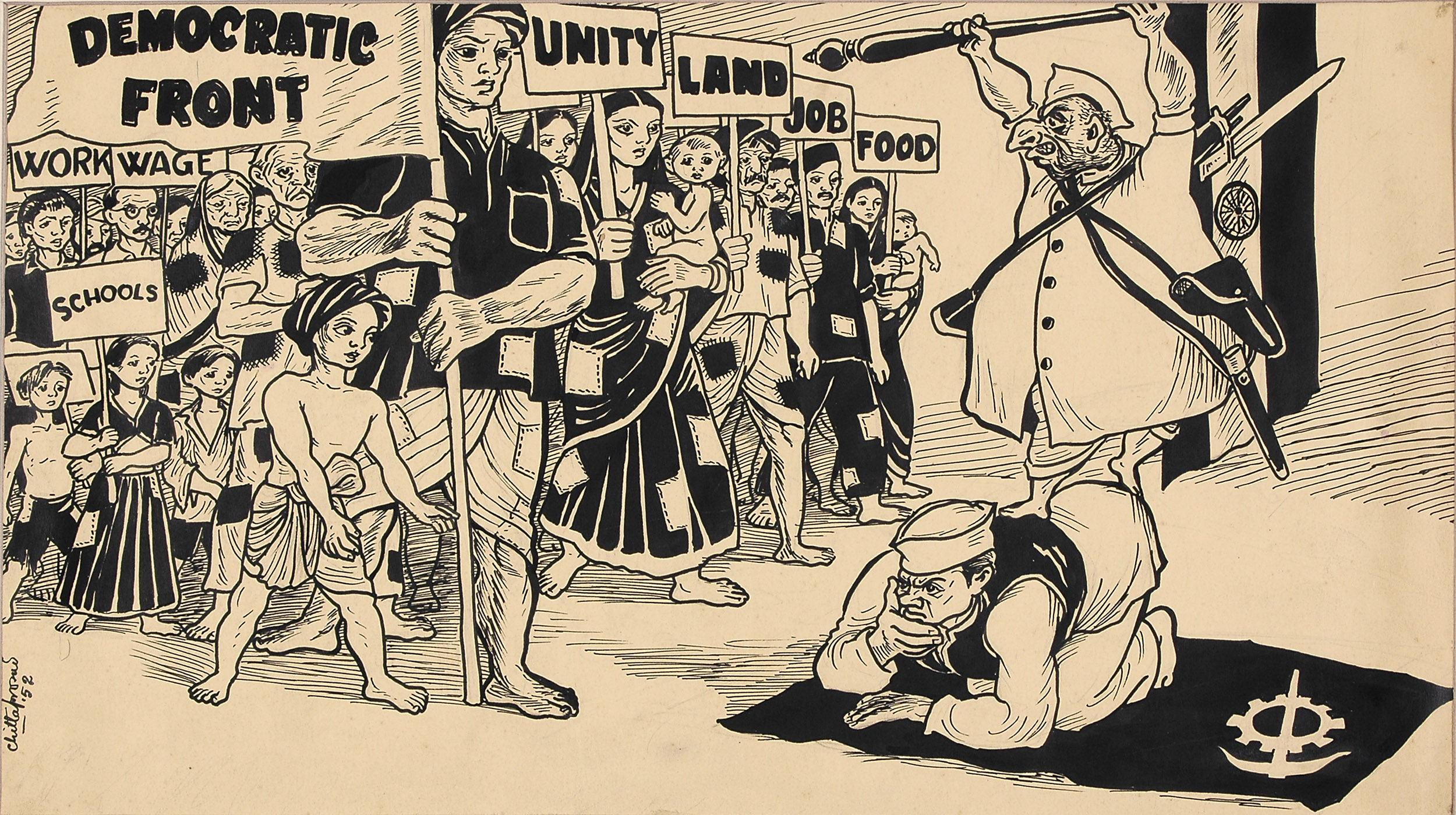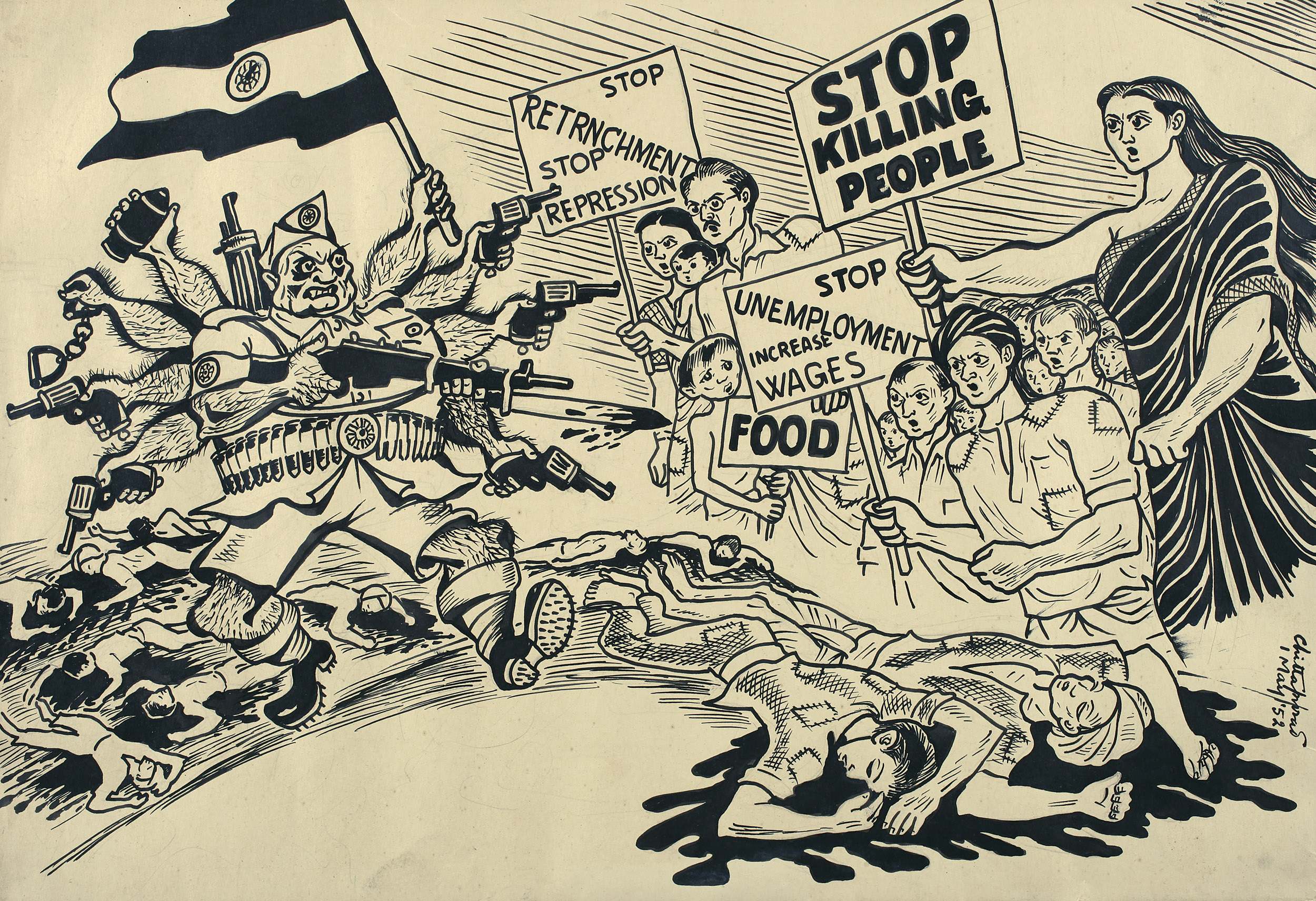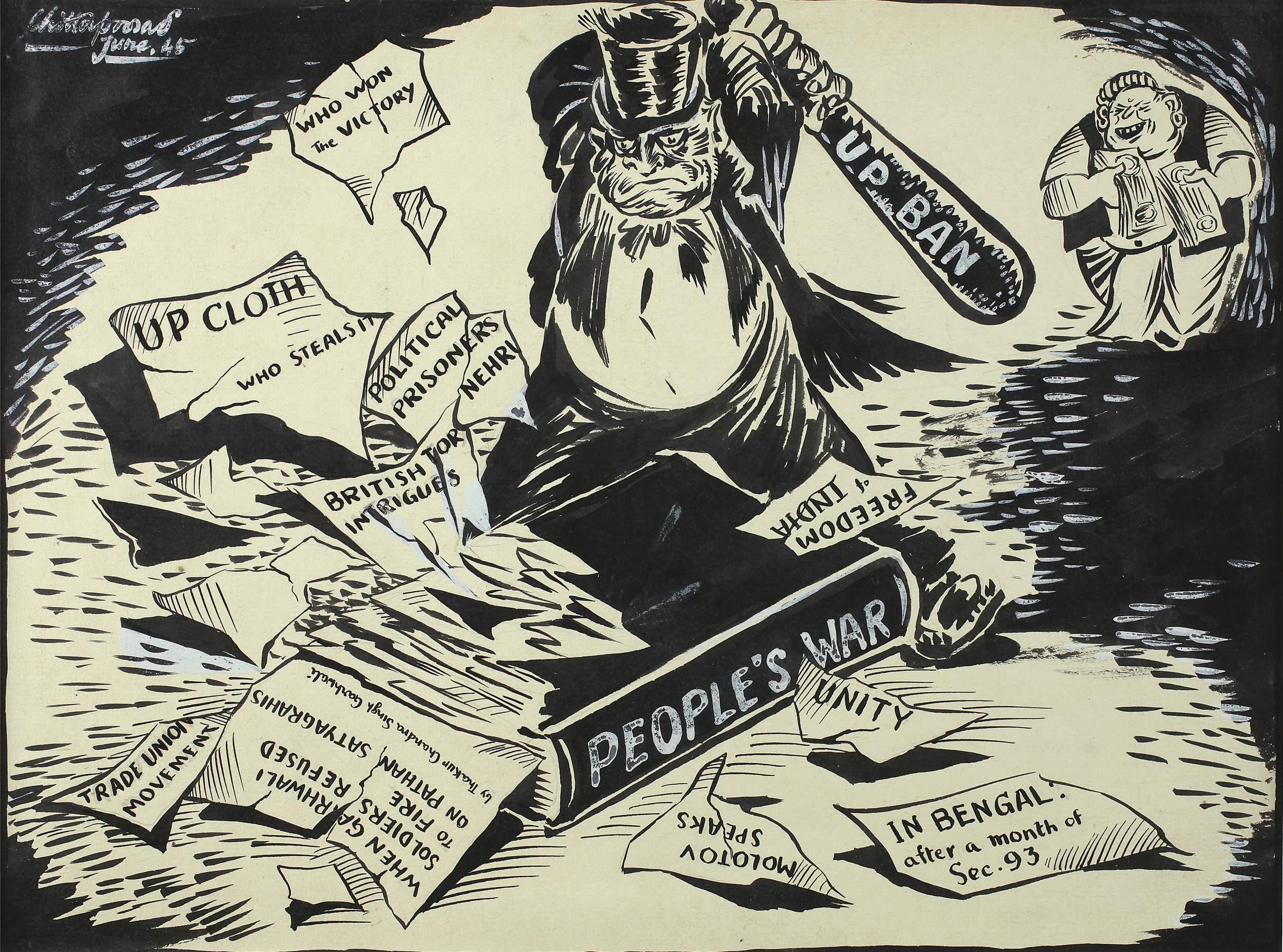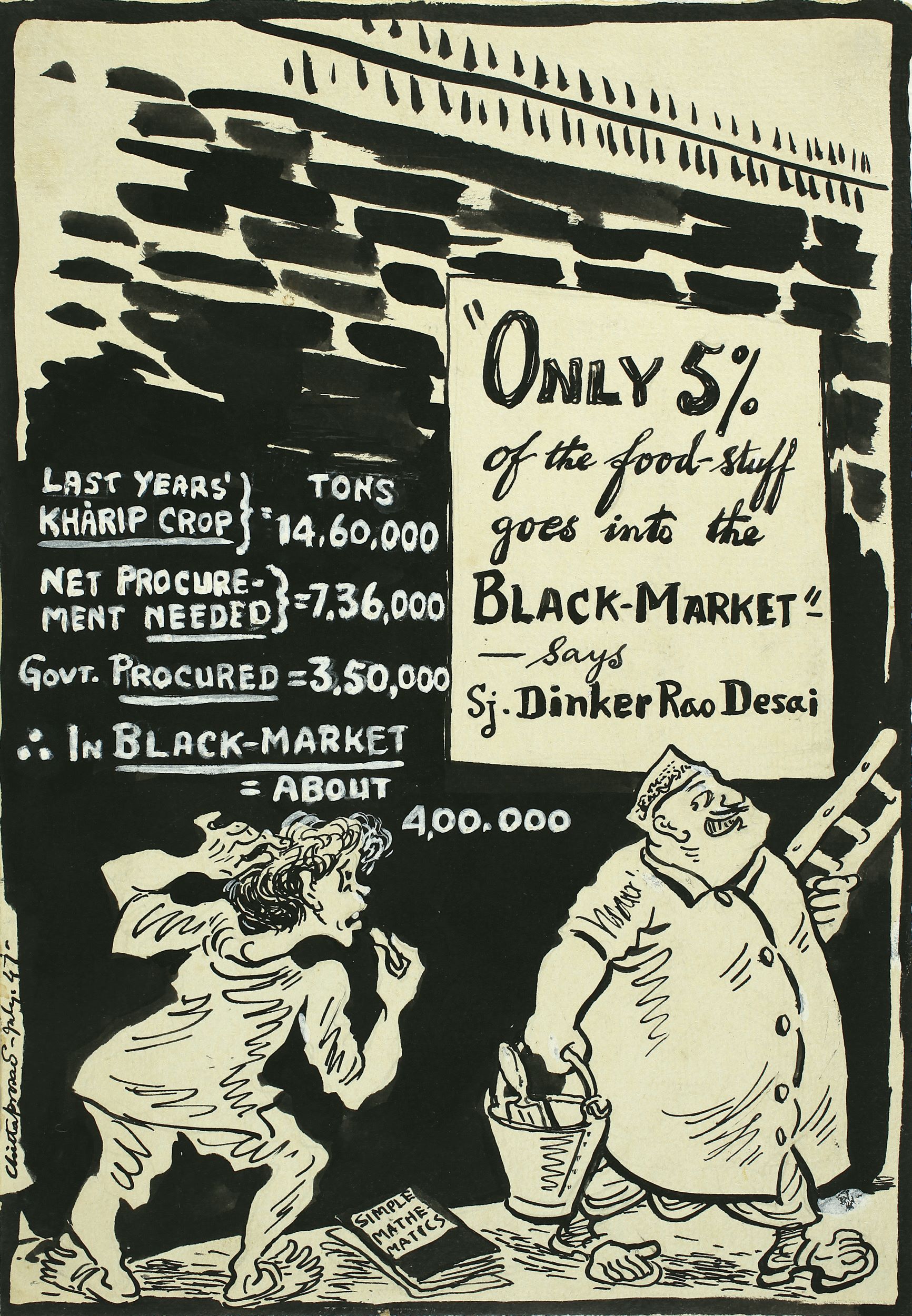Democratic Values
India became a democratic republic with the adoption of the Constitution on 26th January 1950. Ever since complete independence and self-rule seemed to be an approaching possibility, the question of political democracy for a young nation state like India was being hotly debated in the constitutional assembly. During this process, and in the decades thereafter, artists, poets, and intellectuals used satire and other critical devices to raise a dissenting voice when the ideals of democracy, enshrined in the constitution come under threat. Through caricatures from the DAG collection, students can engage with the Constitution and the nuances of democratic ideals, going beyond theory to participate as interlocuters in a complex and often fraught democratic process, with the classroom as the first forum for building political consciousness.
Chittaprosad
Untitled
Brush and ink on paper
DAG Foundation Collection
Chittaprosad
Untitled 1952
Ink on paper
Chittaprosad
Untitled
Brush and Ink on Paper
Chittaprosad
Untitled
Brush and Ink on paper
Chittaprosad
Untitled 1945
Brush and ink and water colour on paper
Chittaprosad
Untitled
Brush and ink and water colour on paper
Chittaprosad
Untitled 1947
Ink on paper
R. K. Laxman
Films Division
We are all familiar with RK Laxman’s political cartoons drawn at crucial junctures of India’s history since 1947 from our history books, especially the figure of the Common Man.
Listen to the cartoonist discuss the art of satire, and how a cartoon functions as a subtle commentary rather than a moralising tool.
To Hell with the State: Caricature in early (Post)colony
Delhi Art Gallery
Some of the great Indian caricaturists plied their trade against the world of colonial rule in the early twentieth century. How did they see their roles change after the nation gained its independence in 1947?
Sayandeb Chowdhury explores this question through close readings of three well-known caricature artists from Bengal: Chittaprosad, Prafulla Chandra Lahiri (or 'Piciel') and Pramatha Samaddar.
The Preamble
History For Peace
The Preamble embodies the ethos of the nation and encompasses the values that define India. This module, developed by Mayukhi Ghosh for History for Peace in collaboration with Alternative Law Forum, seeks to understand these values by establishing the Preamble as a product of struggle, analyzing the documents that served as precursors to the Constitution, and studying the Preamble as interpreted by the Supreme Court and by popular movements.




